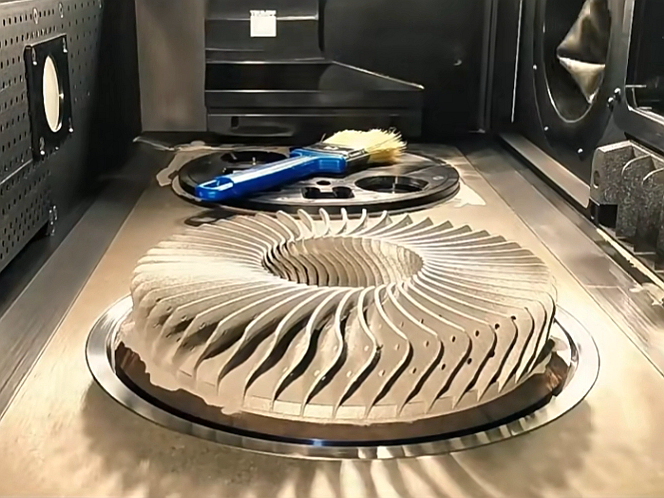What Is Selective Laser Sintering (SLS) 3D Printing?
Introduction
The modern manufacturing landscape continues to evolve significantly with the rapid advancement of 3D printing technologies. Selective Laser Sintering (SLS) has emerged as a frontrunner among various additive manufacturing processes due to its precision, versatility, and capability to fabricate highly complex components. Our CNC machining facility utilizes advanced SLS prototyping technology to deliver efficient solutions in low-volume manufacturing and rapid prototyping. So, what exactly is Selective Laser Sintering, and why is it vital for today’s advanced manufacturing environments?
How Selective Laser Sintering (SLS) Works
Selective Laser Sintering (SLS) is an additive manufacturing technique that leverages high-powered lasers to fuse powdered materials layer-by-layer, creating robust three-dimensional components. Unlike other additive techniques, such as Fused Deposition Modeling (FDM) or Stereolithography (SLA), SLS eliminates the need for dedicated support structures, allowing greater freedom in producing complex geometries.
Here’s a detailed breakdown of the Selective Laser Sintering process:
Design Preparation:
Initially, engineers create the intended component's digital CAD (Computer-Aided Design) model.
The digital model is then exported to the universally accepted STL format for compatibility with SLS equipment.
Powder Layering:
A precise, uniform layer of powdered materials, such as engineering plastics like Nylon or PEEK, or metallic alloys such as Inconel or Titanium alloys, is evenly spread onto the build platform.
Laser Sintering:
A laser beam selectively melts and fuses particles according to the cross-sectional pattern defined in the CAD model.
The non-sintered powder remains loose, naturally supporting the developing structure.
Build Platform Adjustment:
After completing a layer, the build platform slightly lowers to prepare for the next layer of powder.
Layer-by-Layer Construction:
The powder layering and laser sintering steps repeat iteratively, gradually forming the complete component.
Cooling and Finishing:
Upon completion, the finished part cools within the printer to ensure dimensional stability.
The unused powder is removed, and additional finishing processes such as sandblasting or surface coatings can be applied if necessary.
Materials Commonly Used for SLS Printing
Metals & Alloys: Superalloys such as Inconel 718, Titanium alloys, and Aluminum alloys.
Plastics: Nylon (PA), TPU, Nylon composites, Polyethylene (PE), Polyether Ether Ketone (PEEK), and various other engineering-grade polymers.
Advantages of SLS Technology
Selective Laser Sintering offers several key advantages:
Exceptional Accuracy: Highly precise, intricate features and tight tolerances.
Complex Geometry: Produces parts with sophisticated geometries without supporting structures.
Material Diversity: Compatible with numerous advanced materials, including engineering-grade plastics and heat-resistant metals.
Rapid Prototyping Capabilities: Enables swift iterative design and functional testing.
How Selective Laser Sintering Compares with Other Technologies
SLS technology distinguishes itself from other 3D printing techniques significantly:
SLS vs. SLA (Stereolithography):
SLA employs UV-cured liquid resins, whereas SLS uses powder-based materials. Consequently, SLS-produced components typically possess superior mechanical strength and functionality.
SLS vs. FDM (Fused Deposition Modeling):
Unlike FDM’s extruded filament method, SLS provides greater flexibility in creating detailed, complex geometries without structural supports, enhancing material property performance.
Applications of SLS 3D Printing
SLS is particularly valued across diverse sectors for its precision and flexibility:
Aerospace and Automotive:
Used for fabricating complex structural components, lightweight parts, and functional prototypes capable of stringent aerodynamic and mechanical testing.
Medical and Healthcare:
It is ideal for creating customized implants, prosthetics, specialized surgical tools, and anatomically precise patient models for surgical planning.
Consumer Electronics:
Essential for manufacturing intricate casings, device housings, and functional prototypes rapidly.
Product Development:
Facilitates rapid prototyping, allowing businesses to quickly iterate designs and perform thorough mechanical and functional evaluations.
Advantages of Integrating SLS at Our CNC Machining Company
In our facility, integrating SLS with traditional CNC machining services delivers unparalleled versatility, accuracy, and efficiency:
Rapid Design Iteration:
Accelerates product development, significantly reducing time-to-market.
Cost-Effective Low-Volume Production:
Economically, it manufactures smaller production runs without the upfront costs of traditional tooling.
Precision and Reliability:
Upholds rigorous quality standards through advanced inspection techniques.
Diverse Material Selection:
It provides access to a broad selection of materials, from high-performance superalloys like Hastelloy to specialized plastics like polycarbonate (PC).
Why Choose Our CNC Company for Selective Laser Sintering?
Our seasoned engineers and skilled technicians blend expertise in traditional CNC machining with advanced additive manufacturing solutions, offering unique benefits:
Streamlined workflows from prototyping to full-scale production.
Competitive pricing due to minimized production stages.
Expert handling of complex and intricate geometries.
Comprehensive, integrated manufacturing solutions, including design support, prototyping, machining, finishing, and assembly.
Conclusion
Selective Laser Sintering continues transforming industries, enabling companies to streamline product development, enhance prototyping processes, and deliver innovative manufacturing solutions. Our CNC machining and SLS integration position your business ahead of the competition by turning your concepts into reality faster and more efficiently.
Connect with our experienced team today and discover how our comprehensive manufacturing services can elevate your projects.
Frequently Asked Questions (FAQs)
What are the primary advantages of Selective Laser Sintering (SLS) over other 3D printing methods?
What types of materials can be used in Selective Laser Sintering?
How accurate are parts made using Selective Laser Sintering technology?
How can our CNC machining services complement Selective Laser Sintering for complex projects?

